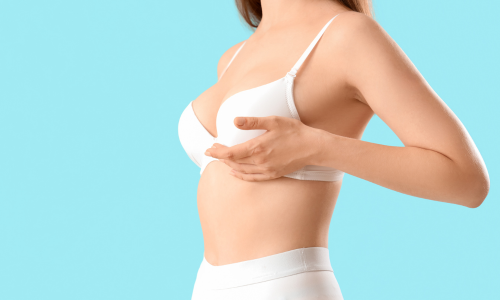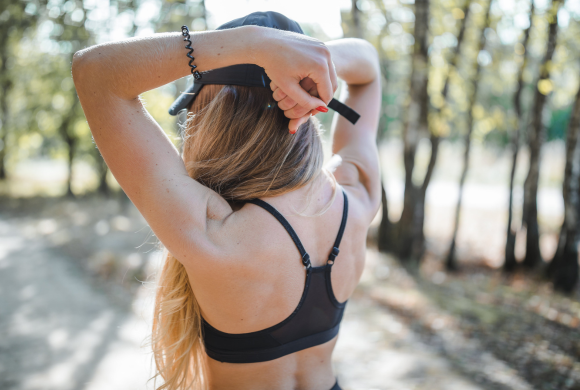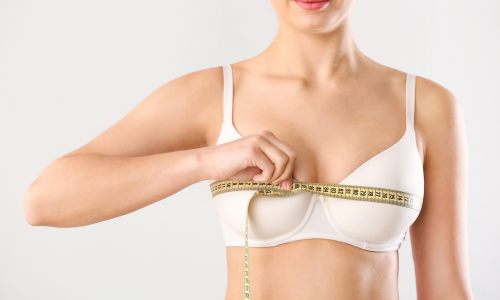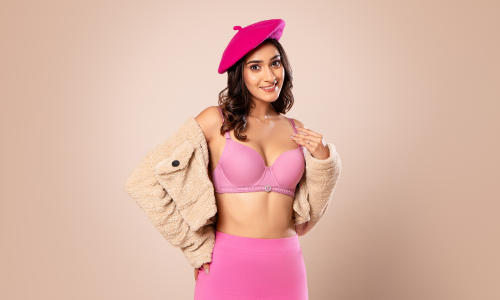Have you ever experienced the most frustrating issue when your bra band rolls up? This is the most common issue that makes you feel uncomfortable and also affects the overall fit and support of your bra.
However, understanding why this happens and taking the necessary steps will help enhance comfort and confidence. This blog post will delve into the reasons behind the bra band riding up and offer you an effective solution to tackle the issue.
Why Does My Bra Ride Up in the Front and Back?

Incorrect Size: The main reason for a bra band rolling up is wearing the wrong size. If your bra band is too loose, it has a tendency to ride up as you move. Always ensure that you are wearing the right band size by getting professionally measured or referring to a sizing guide.
Lack of Support: Another factor that leads to the bra band riding up is a lack of support. Bras with worn-out elastic or weakened support structures will not be able to hold the band in place,causing it to ride up. Replacing your bras regularly and opting for styles with proper support will help alleviate the issue.
Incorrect Fastening: Fastening your bra on the tightest hook from the beginning will lead to the band stretching out over time, resulting in ride-ups. Always start with the loosest hook and gradually tighten it as the elastic stretches with wear.
How to Stop Bra Riding Up?
Now that we have identified the reasons behind bra band rolls, let's explore some of the steps to prevent this issue.
Step 1: Get the Right Size Bra
An ill-fitting bra is one of the major reasons behind a bra band riding up. Let's explore the scenarios of wearing the wrong size bra.
Scenario 1: When the cups are too large, they create a gap that will cause the front to ride up.
Scenario 2: On the other side, when cups are too small, they can weigh down on the straps and pull the band upward at the back.
Scenario 3: When the straps are too tight, it is easily noticeable. They dig into your shoulders and leave red marks behind when you take off your bra. You may also notice your bra band riding up when your straps are too tight.
So, it is most important to wear the right size bra. Measure yourself properly and try bras in different sizes to find the correct size for you. (or) Visit a lingerie store consult with a professional fitter, or use a bra size calculator to ensure you're wearing the correct size bra. With the right size bra, you can experience the utmost comfort and support and reduce the chances of the band riding up.
Step 2: Handle with Care
To maintain the support and elasticity of your bras, just follow the care instructions provided by the brand. It is advisable to avoid drying and machine washing, as they can weaken the elastic. Hence, it is best to wash your bras by hand and air-dry them to preserve their shape and functionality.
Step 3: Replace Your Worn-out Bras Regularly
You may ask why you should replace your bra even if you got the right fit and how often you should recheck your bra size, right? Let's discuss the main reasons for replacing bras and the time frame for rechecking bra size:
Reason 1: Bras lose their elasticity and support as the fabric stretches over time with prolonged wear, making them prone to riding up.
Reason 2: If your band is still loose on the tightest setting, replacing it is necessary.
So, if you encounter any of the challenges mentioned, it's advisable to replace your bras. Depending on the condition and frequency of use, consider replacing them every 6–12 months.
Step 4: Adjust Straps and Band
The bra band and straps play a significant role in offering support and keeping the bra in place. Always ensure your straps are adjusted to the correct length to provide minimal support without digging into your shoulders. While adjusting the straps, monitor how much they pull at your shoulders.
Also, check that the band is positioned parallel to the ground and sits snugly around your ribcage without digging in or riding up at the back. This helps prevent issues like red marks or shoulder pain.
Step 5: Invest in High-quality Bras
Opt for bras made of high-quality materials with features like wide bands, reinforced side panels, and adjustable straps for maximum support and to prevent riding up.
By following these steps, you can easily overcome issues with bra bands riding up and experience a comfortable fit throughout the day. If you have any questions, feel free to ask!
FAQs
Why Does My Bra Feel Tight?
A bra may feel tighter due to a few different reasons:
- Increased blood flow and hormonal changes can cause natural swelling of the breasts throughout the day, making the bra feel tighter.
- The band stretches out over time, especially during frequent washing and wearing, which may provide less support and contribute to the feeling of tightness.
How Do You Know If Your Bra Is Wrong?
Here are some ways to identify if your bra is wrong:
- Your straps are falling down or digging in.
- The back band of your bra is riding up.
- Your cups are gaping.
- Underwire digs or pores
Is there a Bra that Won't Roll Up?
There is no bra specifically designed to prevent roll-ups. However, experimenting with various bra styles and following the above-mentioned steps can help reduce roll-up.
How Tight Should a Bra Be?
Your bra should feel supportive but not uncomfortably tight. You should be able to comfortably fit two fingers under both sides of the bra band. If the bra easily pulls away from your body, it is too loose.
Which Bra is Best for a Heavy Breast?
For sagging breasts, consider a push-up bra, a plunge bra, or a balconette bra for optimal support.
What Type of Bra is Best for Support?
Padded bras offer excellent support and help keep breasts in place, making them a popular choice for many women seeking comfort and support.
A properly fitted bra is essential not only for comfort but also for your overall posture and confidence. Don’t let issues with a riding-up bra band hold you back. Take the necessary steps today to experience the difference of a perfectly fitted bra.



